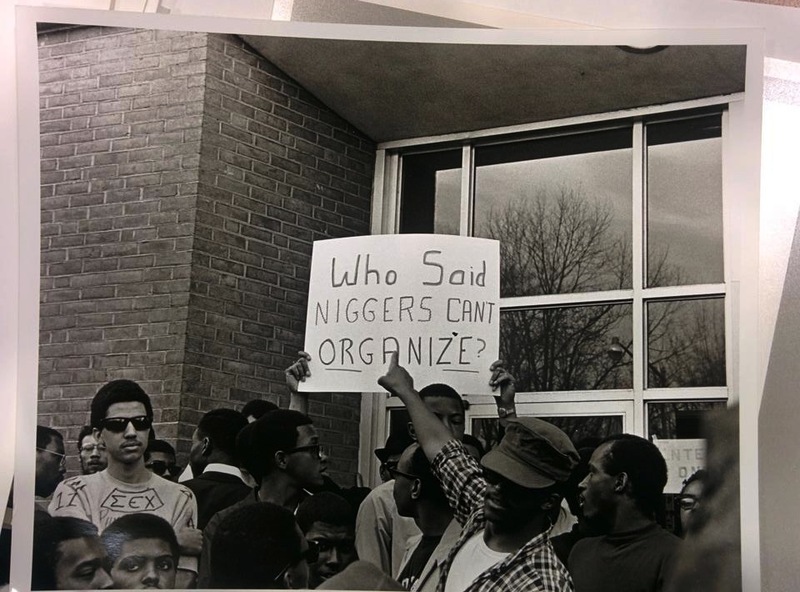In 1963, the youth were the driving force behind the movements in Birmingham, AL. While most envision Rev. Dr. Martin Luther King, Jr. and Ralph Abernathy when thinking of Birmingham, it was the children, as old as 17 years old and as young as six, that took to the streets and truly began to alter the balance. As many as 300 young children flooded Birmingham streets and jails as a part of the Birmingham Children’s Crusade. However, while the schoolchildren were simply in the streets, radical college students were organizing and they were doing so quickly. All across the nation, college students were gathering people and energy to lead the fight to reclaim communities. However, in Birmingham, these students knew that their lives depended upon their organization and will. This image features several college protesters and organizers gathered outside of a building. A young man in the back is holding up a large sign that reads, “Who said niggers can’t organize?” as another young man in the forefront points and calls further attention to the sign. The language used in the poster represents two different key points: 1) the students' maturity as they recognize the true nature of what they are fighting against and 2) their determination and fervor as they attack such hatred and viciousness with unmatched energy.
As the impact from the Student Nonviolent Coordinating Committee (also known as SNCC) increased, young college students became increasingly involved even as they faced naysayers due to both race and age. As Leigh Raiford argues, SNCC was familiar with the effect imagery could have on a movement and knew that by controlling representation their messages would go a much longer way. Raiford notes that, “photography offered SNCC a means of mobilizing prospective participants and supporters by projecting a self-crafted image, not one constructed for them by the mass media, though in dialogue and negotiation with dominant depictions” (90). Such a reclaiming is precisely what this image represents: students beginning a recuperation of a term created to dehumanize and debilitate Blacks, using the spotlight to demand a place among organizational leaders. By controlling the narrative regarding how they were seen and perceived, these young, Black students could control what they wanted Birmingham and the rest of the country to hear. These students were no longer content to remain idle, cast aside as children. The students in this image are prepared to demand attention from their community, their city, and their nation.
